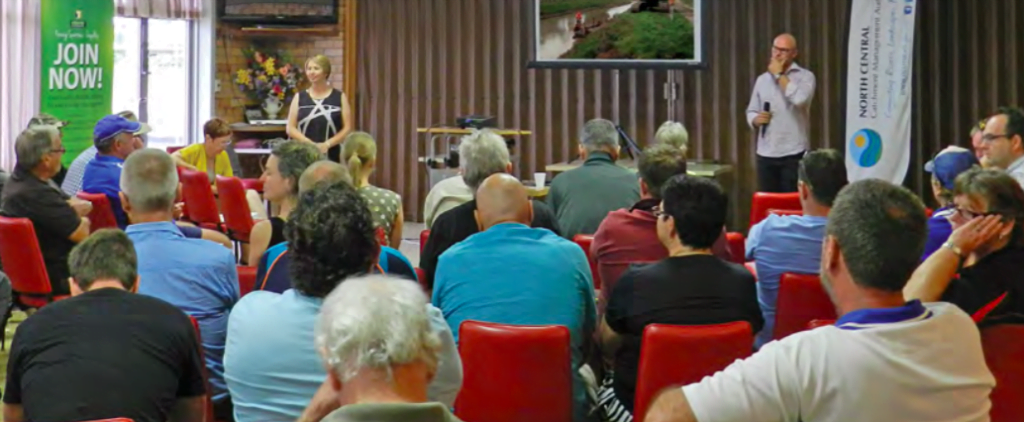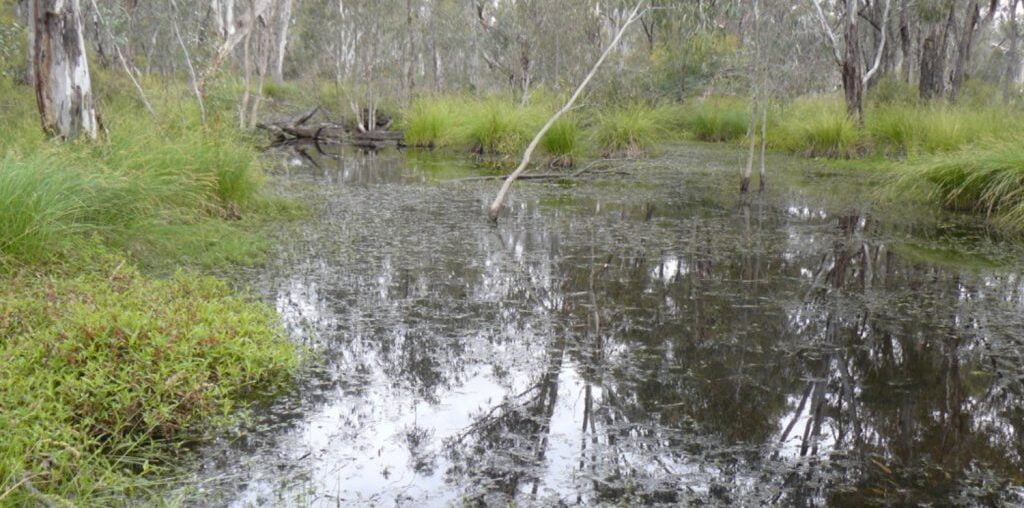Since European settlement native fish populations across the Murray-Darling Basin have decreased by up to 90 per cent. In the Gunbower-lower Loddon area, nine of the 22 species once located in the system are now locally extinct. Of the 13 that are present, six are listed under national and/or state legislation as threatened.
Thankfully it’s not all doom and gloom, the North Central Catchment Management Authority (CMA) has a plan to ‘bring native fish back.’ The Murray-Darling Commission Native Fish Strategy 2003-13 identified the majority of these actions over a decade ago, but the North Central CMA are applying these actions on a regional scale in a vibrant and productive irrigation area.
The Native Fish Recovery Plan – Gunbower and lower Loddon (the Plan), is a large scale, 20+ year plan that aims to boost native fish populations and improve river health in over 200 kilometres of streams and wetlands in the mid-Murray River system. The Plan vision is:
Native fish diversity in the project area will be recovered and abundance will be increased to 50 per cent of pre-European by 2035.
The Plan takes a different philosophical approach to most others regarding flow. Instead of trying to restore streams to their natural state; it recognises the opportunities to increase native fish populations within an existing network of irrigation delivery streams in the Torrumbarry Irrigation Area. The system contains two anabranches of the Murray River, (Gunbower Creek and Pyramid Creek/lower Loddon River), which means the consumptive water can be used en route to provide flows that fish and habitat need. That is, making every drop count twice. The increase in native fish populations will support increased recreational fishing, eco-tourism and benefit the regional economy.

The Plan addresses four key factors responsible for the decline of native fish populations: alteration of natural flow regimes, loss of connectivity for fish movement and migration, degraded habitat and managing threats.

Fixing flows
Environmental water management plans have been developed for all main waterways within the project area. These facilitate delivery and adaptive management of all water (consumptive and environmental), without compromising irrigation water delivery, to meet the needs of fish by providing cues for critical biological processes (such as spawning), driving a productive food web, and increasing the coverage and diversity of macrophytes for fish habitat.
Restoring connectivity
Fish passage will be reinstated on key barriers in the system, by the construction of fishways or the removal of redundant barriers. Fishways have been constructed on Gunbower weir in Gunbower Creek, Kerang weir, and ‘The Chute’ in the Loddon River. Concept design or construction is underway at six other sites throughout the Little Murray River, Box Creek, and Gunbower Creek systems. Once connectivity is reinstated, fish will have unrestricted access to and from the Murray River, as well as to a network of over 200 kilometres of rivers and wetlands, including high quality nursery habitats such as Kow Swamp.
Reinstating habitat
The Plan aims to rehabilitate fish habitat through familiar river health projects such as fencing and off-stream watering to restrict stock movement into waterways, revegetating and weed management. Instream woody habitat (snags) density has been mapped and reinstatement is occuring in priority areas to provide residential habitat for key fish species (e.g. Golden perch and Murray cod), resting points for moving fish and sites for food production. Other key actions in the Plan are to recreate geomorphic diversity, particularly deep pools that have become infilled with silt, investigate options to increase hydro-dynamic diversity, and trial littoral habitat restoration such as transplanting macrophytes.
Some locally extinct species are unlikely to recolonise the region as they have poor dispersal capabilities and there are no nearby source populations. These will require translocation or reintroduction. Candidate species include Southern pygmy perch, Flat-head galaxias and Freshwater catfish, once habitat has been reinstated and flow requirements achieved.
Managing threats
It is well established that large numbers of native fish are lost from the system via irrigation off-takes – both channels and pumps. Once fish enter the channels they are effectively lost from the breeding population, and pumps are also causing a direct loss of fish. A key component of the Plan is to work with private industry to create irrigation channel and pump screens that protect fish and meet the needs of local farmers and irrigators. The North Central CMA will continue to work with manufacturing and construction industry here, in Australia, to develop, monitor and install appropriate screens within the project area.
Another priority action is to develop a pest management strategy that includes feasible control options and adopts new solutions (e.g. the carp herpes virus).

The Plan is ambitious and will bring together research organisations, policy makers, management agencies, and the community. The North Central CMA, in partnership with Victorian Recreational Fishing Peak Body, is strengthening links with the community through events such as a forum in Cohuna that focused on irrigation channel screens, a carp management forum in Kerang, and a World Fish Migration Day tour that showcased the region’s fishways. These have generated great interest, with over 40 people wanting to be part of a native fish habitat group to help with on-ground actions. Working with Traditional Owners, fishing clubs and community groups as delivery partners will be integral to the success of the Plan. The Native Fish Recovery Plan is being supported through state and federal government funding.



